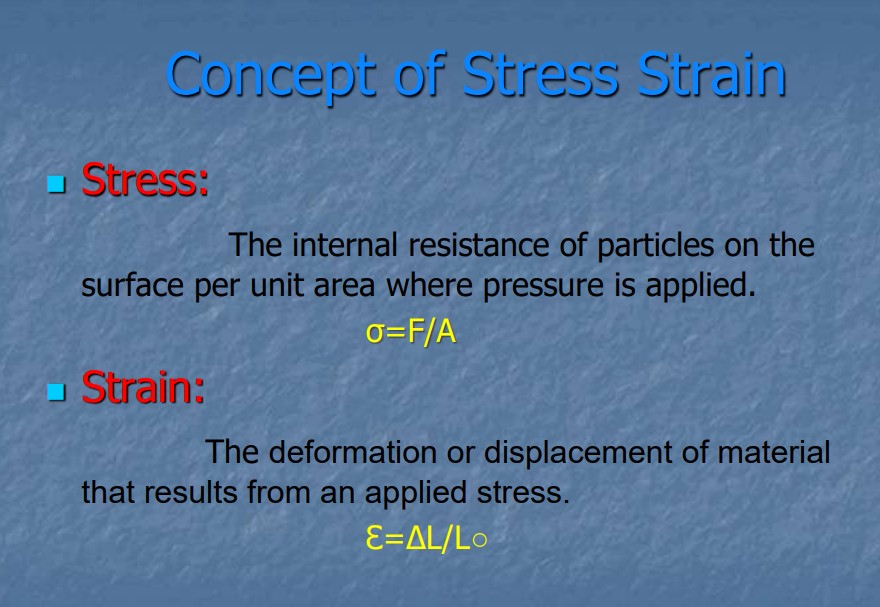The Mechanics of Stress and Strain in Materials (Grade A)
Summary:
This text discusses stress-strain behaviour and elastic deformation of materials. It begins by emphasizing that many materials experience forces or loads in service. The mechanical behaviour of a material is defined by its response or deformation to applied loads, and important mechanical properties include strength, hardness, ductility, and stiffness.
The concept of stress and strain is introduced. Stress is defined as the internal resistance of particles on the surface per unit area where pressure is applied, while strain refers to the deformation or displacement of a material resulting from applied stress.
Three principal ways in which a load may be applied are identified: tension, compression, and shear. Tension involves pulling forces, compression applies opposing inward forces, and shear applies forces parallel to the surface.
Tension, compression, and shear tests are explained. Tensile tests measure a material’s response to a pulling force; compression tests subject the material to inward forces, and shear tests involve forces applied parallel to the surface.
Elastic deformation, where stress and strain are proportional, is discussed. The elastic modulus, which measures a material’s stiffness, is determined by analyzing the slope of the interatomic force-separation curve.
The effect of temperature on deformation is briefly mentioned, stating that shear stress is directly proportional to shear strain.
The text concludes with a list of references for further reading on topics such as the secant modulus of elasticity, nonlinear elastic behaviour, and determining the modulus of elasticity for nonlinear stress-strain curves.
Excerpt:
The Mechanics of Stress and Strain in Materials
Table Content
- Introduction
- Concept of Stress-Strain
- Elastic Deformation
3.1 Stress-Strain Behavior
Introduction
- Many materials, when in service, are subjected to forces or loads.
- Example: Include the aluminium alloy from which an aeroplane wing is constructed and the steel in an automobile axle.
- The mechanical behaviour of a material reflects the relationship between its response or deformation to an applied load or force. Important mechanical properties are strength, hardness, ductility, and stiffness.


Reviews